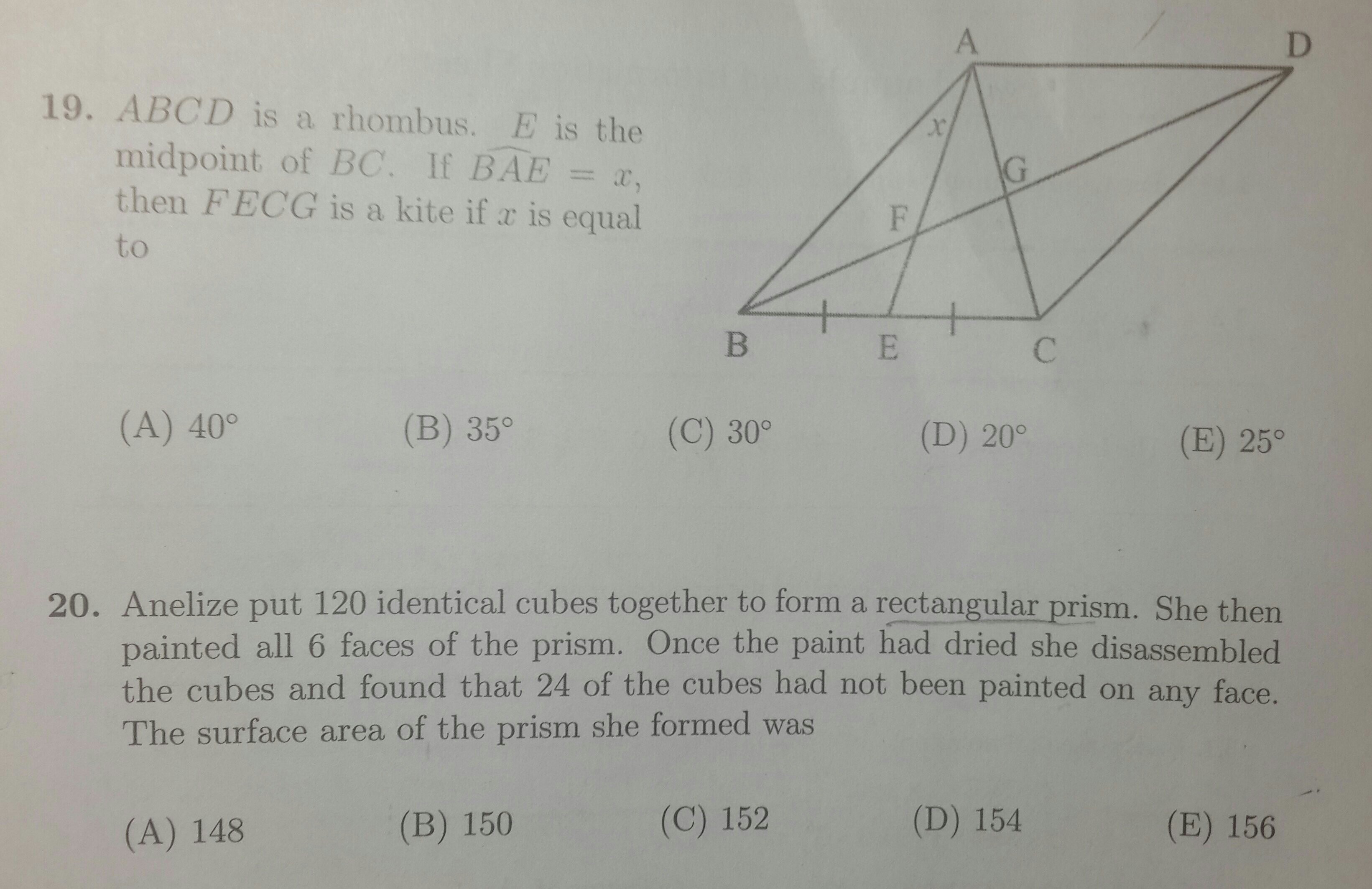SA Mathematics Olympiad (2015) - 3 Tough Questions

The first round of the South African Mathematics Olympiad was held today at various high schools throughout the country. Can you solve the two hardest questions in the paper?
No vote yet
1 vote
Easy Math Editor
This discussion board is a place to discuss our Daily Challenges and the math and science related to those challenges. Explanations are more than just a solution — they should explain the steps and thinking strategies that you used to obtain the solution. Comments should further the discussion of math and science.
When posting on Brilliant:
*italics*or_italics_**bold**or__bold__paragraph 1
paragraph 2
[example link](https://brilliant.org)> This is a quote# I indented these lines # 4 spaces, and now they show # up as a code block. print "hello world"\(...\)or\[...\]to ensure proper formatting.2 \times 32^{34}a_{i-1}\frac{2}{3}\sqrt{2}\sum_{i=1}^3\sin \theta\boxed{123}Comments
Solution to QUESTION 19 : ( Its not very complicated)
Let FECG be a kite , then
FE=FGandEC=GC
GC=GA (Since diagonals of a rhombus bisect each other)
EC=BE (Since E is mid-point of BS
Therefore, BC=AC
But, AB=BC (Sides of a rhombus)
So, AB=BC=AC
△ABC is an equilateral triangle
Since medians of an equilateral triangle also bisect the angle from which they are drawn,
2x=60
x=30
Log in to reply
A really good solution! Good job!
This challenging question also featured in the paper:
Triangle ABC has a point D on line AB such that D is the midpoint of AB. E is the midpoint of CD. F is the midpoint of AE. If the area of triangle ABC is 24, find the area of triangle DEF.
Log in to reply
Repeatedly using the fact that the midpoint of a triangle divides the triangle into 2 triangles of equal area should get you the answer.
Hijacking @@Krishna Sharma's diagram, we have [ADC]=21[ABC], [ADE]=21[ADC] and [DEF]=21[ADE]. Combining all the equations, we have [DEF]=81[ABC]=3
Log in to reply
Hi Siddhartha! This is a very insightful solution. If you knew that the "median of the triangle divides the triangle into two triangles of equal area", it makes the problem very easy. Your solution is definitely elegant. Thank you so much for sharing!
yupp.. nice and easy.. without complications
The answer is 3. Since nothing is given for simplicity consider the triangle is equilateral,find out the the square of side(yes side length not required), Now agian for simplicity consider the AB as base of triangle with vertex A at origin and we are done just find out coordinates of D,E,F in terms of 'a' and you are done!
Sorry for my poor handwriting :p
For 20, I don't see any easier solution other than seeing that a rectangular prism with side lengths 6,5,4 works and thus the surface area is 148.
Log in to reply
Siddhartha, how did you figure out that the side lengths were 4,5 and 6?
Log in to reply
Pretty much a lucky guess. We see that its the only solution to xyz=120 and (x−2)(y−2)(z−2)=24.
The first equation is obvious. The second one comes is from the fact that the total volume of the cuboid not colored is (x−2)(y−2)(z−2), since we have to discount the cubes which appear on either ends.
I think the answer of Q.19 is c) 30°.